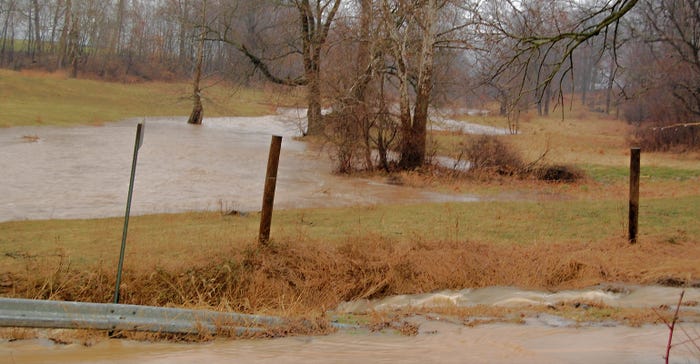April 11, 2017

It seems strange to talk about heavy rains and runoff when some areas of the Northeast are still under drought warnings. But this is spring, when we’re often hit with weather extremes.
Last week’s blog by Karl Czymmek, nutrient management specialist for Cornell Pro-Dairy, stirred me to reinforce his message, which follows. He addressed the heavy rains and runoff as a teachable moment — an opportunity to learn.
His message applies to every farm from Maine to Maryland. I’ve added two photos to illustrate what’s still all too common.
When streams run chocolate brown
“Be curious,” urges Czymmek. “Don’t miss this chance to improve your ability to understand water movement in your landscape and better manage risk in wet weather conditions. Spend some time observing runoff from farmstead and fields.

MUDDY WATERS: Think of it as your soil organic matter and crop nutrients — your investment in the future — being flushed off your farm.

“Look for places around farmsteads that may need better management or protection. This can help to prepare wet weather standard operating procedures for those thinking about the Environmental Conservation Law CAFO [concentrated animal feeding operation] permit.” (Note: Even smaller livestock operations are now being pushed to clean up their environmental impacts.)
“As for fields, look for concentrated flow areas where it may be wise to avoid manure applications the next time marginal conditions are experienced. Be on the lookout for places where erosion control practices need to be stepped up.
“Get outside today. Watch the runoff and see what you can learn. It may give you an edge.”
That’s sound advice for every farmer and landowner in the Northeast. The future productivity of the soils you’re entrusted with is worth protecting.
Bite-sized morsel
We can always learn much from adverse conditions if we’re not blind to them. And our response to them is what separates the exceptional from the unremarkable.
You May Also Like




